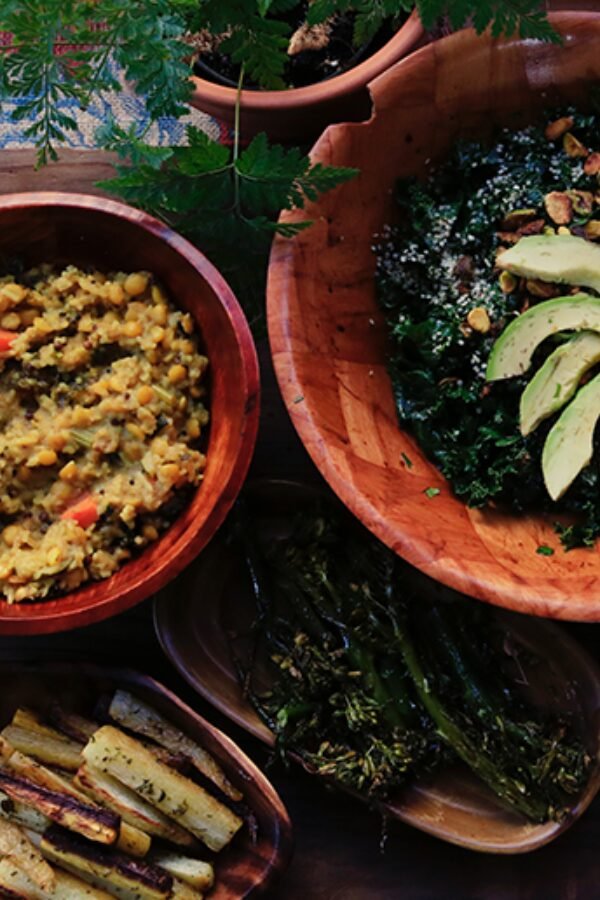Sacred Foods and Some Secrets: Ayurvedic diet? Yes, It Exists. Igniting Pita, Embracing Vata, Grounding Kapha for a Blissful Body and Mind.
"
In this article, Together, we will explore how the art and science of the Ayurvedic diet may balance not just what we eat but our whole being.
Have you ever given thought to a diet that prioritises general health over weight loss? The Ayurvedic diet is a combination of modern health and ancient Indian knowledge.
Imagine it as a path toward holistic health, where you achieve balance for your body, mind, and soul.
The Ayurvedic diet is a tried-and-true philosophy customised to meet your needs, not just what you consume.
This has its roots in thousands of years of practice, so it’s not just trendy. Most Hindu temples in India adhere to its dietary advice, proving its enduring effectiveness.
But
Why are ayurvedic diets considered as holistic medicines?
Embrace The Holistic Medicine With The Ayurvedic Diet
According to researchers, discard any preconceived notions about traditional diets regarding the Ayurvedic diet. It’s an entirely different game, rejecting predetermined eating plans and saying goodbye to weight loss as the ultimate objective.
Instead, this strategy revolves around adopting a way of life that meets your health requirements, general well-being, and a menu full of healthy, unprocessed goodness. The distinctive aspect of the Ayurvedic diet is the conviction that every individual possesses a unique combination of energy known as Pitta, Vata, and Kapha.
The Ayurvedic diet customises its recommendations according to your energy fingerprint, similar to your unique fingerprint.
And here is the list of five elements in the Indian medical system of Ayurveda and three doshas/energies In Ayurveda.
So Let's dive deeper!
Five elements (Panchatatva) in Ayurveda
Understanding the body’s composition and directing dietary habits are made possible by the concept of Pancha Mahabhuta, or the five elements (Panchatatva), which is central to the ancient Indian medical system of Ayurveda. These five elements are:
1. Earth (Prithvi)
Earth stands for reliability and structure. It appears as bones, muscles, and tissues in the body.
Grounded and nutritious foods like grains, proteins, and root vegetables are good sources of this element.
2. Water (Jala)
Water is a sign of wholeness and fluidity. It is connected to bodily fluids and hdration in the body. Foods high in water, juicy fruits, and hydrating vegetables balance this element.



3. Fire (Agni)
Fire is a symbol of metabolism and change. It controls how the body absorbs and digests nutrients.
Agni is supported by foods with fiery tastes and those that ignite the digestive fire, such as pepper and ginger.
4. Air (Vayu)
Air is a symbol for movement and communication. It is connected to the neurological system and circulatory system of the body.
Light, airy, and easily digested foods contribute to Vayu equilibrium. Some food items include leafy greens, fresh fruits, and herbal drinks.
5. Ether (Akasha)
Ether is connected to openness and space. It stands for the most subtle feature of the components.
It refers to internal body spaces, such as the digestive tract. Like fasting, having minimal consumption of meals encourages lightness and clarity.
However, all five elements represent themselves in the form of 3 energies in humans, called “doshas” or the Tri energies.
The 3 Doshas/Energies In Ayurveda
Let’s get to know about these “Doshas.”
1. Vata
Vata is a combination of air and space. Vata dosha individuals are imaginative and energetic, but they become tired quickly.
Ginger and pepper are examples of warming spices used in Ayurvedic medicine.
So what do you need to do here?
- Limit the variety of things you eat,
- Drink plenty of water and
- Avoid foods that are too sweet or strong if you're trying to reduce your vata dosha.
2. Pitta
Pitta is a fire-water combo. These individuals are clever, temperamental, have a strong appetite, and have regular digestion.
Those with high pitta levels should avoid most spices, especially pepper and chile. They should also avoid acidic foods like salad dressing, tomatoes, and plain yogurt.
As an alternative, incorporate grains, dairy, sweetened yogurt, and green veggies.
3. Kapha
Kapha is a blend of water and earth. This kind of person typically possesses great intelligence and endurance.
Those with high kapha should eat bitter and spicy foods like garlic, ginger, peaches, and pears to balance their water element. They need to incorporate a range of spices into their meals. Kapha individuals must avoid
- Root vegetables,
- Frozen foods, and
- Greasy and high-fat foods.
The Benefits of Ayurveda Diet.
According to an Ayurvedic practitioner, Susan Weis-Bohlen, the Ayurvedic diet is a seasonal diet based on where you live, food available, and what your mind-body needs.
Implementing simple Ayurvedic diet habits like eating meals at the right time and eating according to the seasons might have a lot of advantages. Several studies support the core healthy eating principles of Ayurveda diets.
The following are some possible advantages of the Ayurveda diet that could enhance your general health.
1. Encourages Whole Foods for Wholesome Nutrients
The Ayurvedic diet provides specific suggestions for every dosha. It emphasizes eating a variety of foods, including whole meals, dried fruits, vegetables, fruits, grains, and legumes that are high in fiber.
Ayurvedic diet approach ensures abundant vital nutrients, offering a substantial health benefit.
The diet also reduces the amount of processed food, which is frequently low in fiber and essential vitamins and minerals.
2. Creates Awareness to Mindful Eating Practice
The Ayurvedic diet promotes awareness in addition to specific food consumption.
Practicing mindfulness involves being highly conscious of your feelings in the moment
Specifically, mindful eating promotes reducing outside distractions during meals so that you may concentrate on your food’s flavor, texture, and aroma.
3. Strikes a balance in the Mind-Body Connection
The intimate relationship between the mind and body is recognised in the Ayurvedic diet. It’s well-established that mental and emotional wellness significantly affects physical health, not just a passing trend.
The Ayurvedic approach becomes a complete treatment for a happy life by nourishing both components.
Remember: The Ayurvedic diet can sometimes feel overly restrictive as there are various things to consider.
Depending on your dosha, there are long lists of things you should eat or stay away from. This could mean removing entire food collections or healthful foods that are believed to obstruct particular doshas.
One should make significant dietary adjustments to exclude processed foods or red meat.
Final Thoughts
The Ayurvedic diet is no fiction in the wellness world; it’s a resounding “Yes, It Exists.” Accept these age-old skills, which unite the mind and body, for a comprehensive path towards enduring well-being.
Subscribe to new post
The One Liner
Useful Links
Order Related Queries
Useful Links
Order Related Queries






